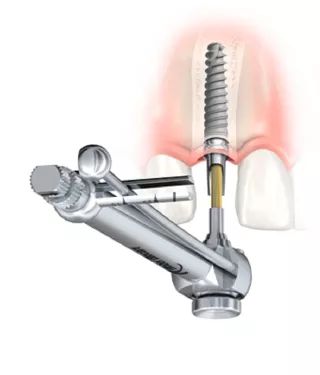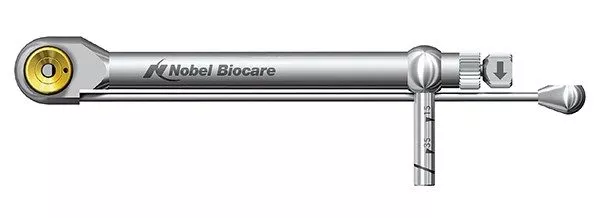
4 rules for using torque drivers and implant screws
Know your implant procedures: discover the 4 rules for using torque drivers and implant screws.
Know your implant procedures: discover the 4 rules for using torque drivers and implant screws.

Implant screws are deceptively simple and exquisitely intricate at the same time.
Implant abutments are commonly fixed to the implant using a screw. Screw mechanics take advantage of the metal structure that can be stretched as the tightening process occurs. Elongating the screw by using the recommended torque setting turns the screw into a “spring” that clamps the components together, improving the joint fixation more than if the screw is simply tightened.
This produces a robust joint, capable of withstanding the rigors of the oral environment during function.
But certain rules must be followed in order to get the most out of this joint.
The Science
A systemic review of abutment screw loosening in single-implant restorations found that abutment screw loosening is a rare event regardless of the geometry of the implant abutment connection, provided that appropriate anti-rotation features exist and proper torque is employed
Rule number 1
Always use original Nobel Biocare manufacturers components and parts. “Compatible parts” may look the same but cannot be guaranteed to work the same. Even “compatible” screws have different thread pitch and patterns. Studies show that even though they may look the same, they do not work in the same way.
Rule number 2
Use as directed. If the manufacturer states a given torque, the screw has been designed and tested to that value. Using a lower or higher torque than prescribed will result in unpredictable joint behavior.
Use of lubricants, ointments and medications affects the implant/ abutment joint, especially under vibration. It is not advised and may lead to premature screw loosening.
Rule number 3
Check that your torque wrench is delivering the correct force required. A recent study showed after repeated use some devices produce forces far in excess of that needed, some far less.
In general, it is recommended that you choose the beam type as it delivers more consistent force. If you have the toggle type (not recommended) calibrate or replace your device yearly—ask Nobel Biocare for details.
Rule number 4
Re-use of screws: Limit the number of times the screw is tightened and loosened. Each time this is done, the subsequent force needed to undo the screw is reduced.
This affects both the screw and the implant to such a degree that after six tightening/loosening events—even if a new screw is used—it does not improve the fastening properties of the joint. As a general rule, only tighten/ loosen the screw a maximum of five times.